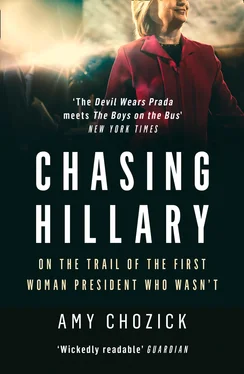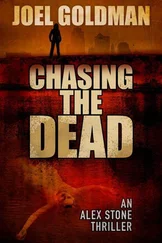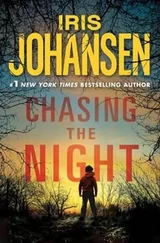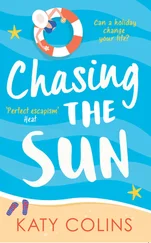1 ...6 7 8 10 11 12 ...20 Years later, when I came across Hillary’s college letters to her own high school friend, I thought of these stages and our shared adolescent misanthropy. “Can you be a misanthrope and still love or enjoy some individuals?” Hillary wrote to John Peavoy when she was a sophomore at Wellesley in 1967. “How about a compassionate misanthrope?”
She wrote about the “opaque reality” of her own self and confessed “since Xmas vacation, I’ve gone through three-and-a-half metamorphoses and am beginning to feel as though there is a smorgasbord of personalities spread before me,” including “alienated academic, involved pseudo-hippie, educational and social reformer and one-half of withdrawn simplicity.”
I didn’t care enough about anything to belong to the Young Democrats (if such a thing existed in my public school, I wasn’t aware) or the debate team. I didn’t pass around petitions to end the death penalty and didn’t have much of an opinion about the news of the day, even though my dad was from Waco and everyone wanted to ask me about the Branch Davidians and if I knew David Koresh. “That was outside of Waco,” I’d say.
I decided, for no other reason than that it would piss off every football player who stood around the kegs of Shiner we’d set up in the middle of a field on Saturday nights, that I hated the Cowboys. I didn’t eat red meat. I couldn’t wait to get the hell out of Texas and move to New York. I loved Bill Clinton … and, worst of all, I loved his wife.
I THOUGHT THINGS would be different in Austin. I didn’t need ivy affixed to a sandstone library, and as my dad reminds us whenever Stef and I bemoan that we never really had a chance to go anywhere besides the University of Texas, “It wasn’t like Harvard was knocking our door down.” But I envisioned something artsy—conversations about Camus over absinthe, maybe—something more than dope bud, a Ben Harper show, and seven of us splitting the same bowl of queso at Magnolia Cafe.
I had even more disdain for the sorority girls, the “debutantes,” than I did the druggies “expanding” their consciousness, as Hillary summed up both social castes in her college letters. I counted down the days until I could move to New York and become a writer.
My closest friend, Barry Dale—who theorizes that we’d found each other in middle school and both wanted to move to New York because “I was the gay and you were the Jew”—had an assignment in his film class. He needed a model to sit in an empty diner in downtown Austin to re-create Edward Hopper’s Nighthawks .
I wore a tight black tube dress with a deep V-neck from Bebe, fishnet hose, and a pair of shiny black heels I’d bought a couple of years earlier with my employee discount at Banana Republic. I sat cross-armed at a bar table as Barry stood on the sidewalk outside snapping photos through the glass.
That’s the photo I think of from my college years. Not drunken spring break nights or fraternity toga parties or eating stale pizza on deadline in the basement of the Daily Texan . Me, in an almost deserted diner, wearing black, looking slightly slutty in a mall-bought dress, staring forward and down at nothing and everything. Barry got an A+. “I love the feel of the girl,” his professor wrote of the photo.
It should’ve been titled the same woe-is-me sign-off that Hillary used to close her college letters.
“Me (the world’s saddest word),” she wrote.
4
Bill Clinton Kaligani
SOUTH AFRICA, 2012
Bill Clinton was holding a glass of chardonnay but not drinking it the night I walked into his suite at the Saxon Hotel in Johannesburg. It was after midnight. I’d just flown to South Africa in a cramped coach cabin with a team of teenage rugby players who were bursting with testosterone and fist pumping during the entire sixteen-hour flight, plus a refueling stop in Senegal.
I’d checked into my room in the main house of the Saxon, once the palatial private residence of Douw Steyn, an eccentric billionaire who befriended Clinton during his presidency. As I walked toward Clinton’s private luxury villa, I passed rows of photos of Steyn with a younger, plumper Clinton. I crossed a wooden bridge over a pond, the sound of peacocks and fireflies and the hum of cicadas in the distance. I opened the villa’s heavy engraved doors. The stand-alone suite had a private bar and a living room decorated in tasteful neutral hues with a scattering of African sculptures.
A handful of Friends of Bill, also known as FOBs, sat at a nearby table playing oh hell!, Clinton’s card game of choice. They made small talk about Hillary’s 2016 prospects. (“If Romney wins, the party will have to pave the way for her …”)
Clinton stood by a row of neatly arranged beige leather bar stools, wearing a baby-blue V-neck cashmere sweater, tan driving shoes, jeans, and a friendship bracelet tied around his frail wrist. Chelsea sat on a sunken taupe sofa sipping Evian alongside Bari Lurie, her chief of staff.
I’d later confess to one of the donors, Raj Fernando, an algorithmic trader in Chicago, that I felt guilty about how much the Times had paid to send me on the Clinton Foundation trip—a six-night swing through Mozambique, South Africa, Uganda, Rwanda, plus a pit stop in Cyprus so Clinton could deliver a paid speech. “Believe me,” Raj said. “I paid more.”
It was the summer of 2012, right before Clinton’s spellbinding speech renominating Obama at the Democratic National Convention, when no one was paying much attention to Bill Clinton. I’d been in Sun Valley, Idaho, chasing down media moguls and crashing a cocktail party with Wendi Murdoch (“Rupert hates the New York Times , but I love you!”) when Jill Abramson approved the Africa trip, never mind that it had nothing to do with my beat at the time.
Looking back, it’s astonishing that The Guys ever allowed me to cover this philanthropic swing. We were all so simpatico then that when the Times photographer showed up from a stint in Yemen with no luggage, Clinton loaned him a razor. I was the only reporter who stayed the entire trip, starting with that first night at the Saxon when Bill Clinton talked my ear off well into the early-morning hours.
Among about a million other topics, he explained that Nelson Mandela had written his memoir on the grounds of the Steyn mansion before it became a five-star hotel.
“Where you’re staying was his home, and that’s where I stayed until 2010,” Clinton said. He looked around at the villa, with its high, airy ceilings and spotless marble floors. “It’s a wonderful place. I love this place,” Clinton said.
He paused for a moment. He’d visited the Soweto slums earlier that day. The next day we would fly to Rwanda where we’d take a military helicopter to a red-dirt village to visit a children’s hospital.
“Yeah, I always feel slightly guilty staying here,” he said. He took a sip of chardonnay. “But I get over it.”
OVER THE NEXT six days, I vacillated between awe at Clinton’s brainpower and verve—feeling blessed to be in this brilliant man’s presence—and total exhaustion from his self-absorption and driveling on. After a couple of nights of hotel-bar banter, I began to feel like the lucky passenger upgraded to first class on a transatlantic flight only to wind up next to a raconteur who never needs a nap and who rambles on because of some internal hole they need to fill.
By the final night in the Kampala Serena Hotel in Uganda, Clinton has relayed his own obscure accomplishments (“In Arkansas, we went from forty-eight percent to fifty-three percent forested land when I left office …”). He has summed up how to solve Africa’s food shortage (“We need to do things Americans did literally eighty years ago during the Depression …”), and he has, for what feels like hours, extolled the virtues of soybeans (“You can grow it with just a thin layer of topsoil …”). He starts every other sentence with “In the 1990s …” and “When I was president …” The Guys even had a name for one defensive monologue I got trapped in after asking about Clinton’s decision to intervene in Somalia in 1993. “You got Black Hawked,” they said.
Читать дальше












